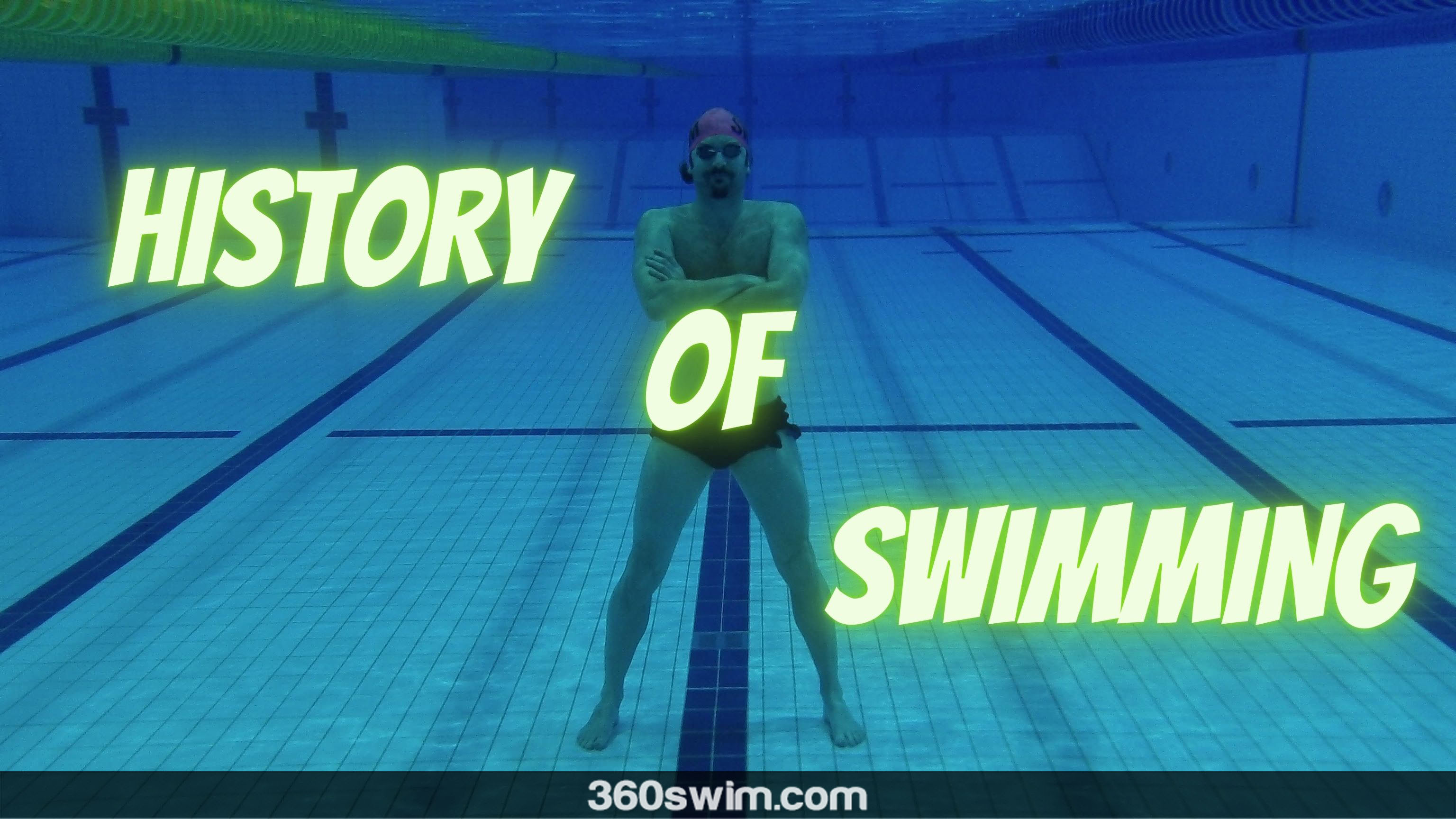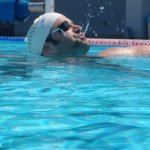HISTORY AND EVOLUTION OF SWIMMING
One can never truly understand what one is learning until one understands its history. While you can certainly learn to swim without knowing its origins, it's fascinating to know that our ancestors were taking to the water 7,000 years ago.
This post will take you on a quick journey through time, exploring the history of swimming and the fascinating evolution of the competitive strokes, often driven by clever swimmers finding loopholes in the rules.
Dive Into: The History and Evolution of Swimming
- From Ancient Art to Modern Sport
- The Evolution of the Strokes
- The "Fifth Stroke": The Underwater Revolution
- Other Game-Changing Innovations
- The Technology Revolution: The "Super Suit" Saga
- The Future of Swimming
- Frequently Asked Questions
From Ancient Art to Modern Sport
Humans have been swimming for millennia, as evidenced by 7,000-year-old rock paintings in the "Cave of Swimmers." However, competitive swimming as an organized sport began in 19th-century England, where the dominant and only accepted stroke was the breaststroke.
This set the stage for one of the first great evolutionary leaps in the sport. According to Wikipedia, at a London competition in 1844, a group of Native American swimmers shocked the British spectators by easily defeating them. Instead of the graceful breaststroke, they used a powerful, windmill-like arm motion with a thrashing flutter kick. The British famously described this "un-European" technique as barbaric and uncivilized, even though it was clearly faster. It would take several more decades for this "front crawl" to be accepted.
🎥 Watch: A Quick History of Swimming

The Evolution of the Strokes
The four strokes we know today are the result of constant innovation, often by swimmers exploiting loopholes in the rules.
- Breaststroke: The original competitive stroke. In the modern era, swimmers like Adam Peaty have shifted the stroke from a long, gliding motion to a high-tempo, power-focused style that minimizes glide time.
- Freestyle: The "front crawl" was popularized by Australian swimmers in the early 1900s who combined the powerful overhand arm stroke with a more efficient flutter kick. ince then, styles have varied wildly, from the straight-arm, high-tempo style of the legendary Janet Evans to the "Thorpedo" kick of Ian Thorpe.
- Backstroke: Originally swum with an upside-down breaststroke kick, the backstroke was revolutionized in the early 1900s when swimmers realized a reverse front crawl with a flutter kick was much faster.
- Butterfly: Butterfly began as a clever way to cheat at breaststroke. In the 1930s, swimmers discovered that recovering their arms over the water was faster than recovering them underneath. For years, this "butterfly" arm motion was used with a breaststroke kick, until the dolphin kick was developed and butterfly became its own stroke in 1952. S
🎥 Watch: How Strokes Evolved
🎥 Watch: Evolution of Butterfly
How has the butterfly stroke changed from its origins to the modern technique we see today?
The "Fifth Stroke" and the Underwater Revolution
The dolphin kick is so powerful it's often called the "fifth stroke," and its use has repeatedly forced rule changes.
The "Berkoff Blastoff" At the 1988 Olympics, American backstroker David Berkoff perfected a technique where he stayed underwater for most of the first lap, propelled only by a powerful dolphin kick on his back. He was significantly faster than his competitors who were swimming on the surface. This "Berkoff Blastoff" was so dominant that FINA was forced to create the 15-meter rule, limiting underwater travel at the start and off turns for backstroke, butterfly, and freestyle.
🎥 Watch: The Dolphin Kick and the "Berkoff Blastoff"
Other Game-Changing Innovations
Beyond the strokes themselves, two other key developments revolutionized the sport: the flip turn and goggles.
The Flip Turn Revolution For decades, freestyle and backstroke swimmers had to touch the wall with their hand and perform a slow open turn. In the 1930s, American backstroker Adolph Kiefer pioneered the flip turn, using a forward somersault to change direction without breaking momentum. By the 1960s, it had become the universal standard, completely changing race strategy and making the sport significantly faster. The "Lochte" IM Turn On the backstroke-to-breaststroke Individual Medley turn, Ryan Lochte perfected a technique where he performed a cross over turn rather than open turn. This proved to be faster and is now widely used by elite swimmers.
The Goggle Innovation It's hard to believe, but swimmers trained and competed without goggles for most of the sport's history, enduring painful eye irritation. The modern competitive goggle was famously introduced by Scottish swimmer David Wilkie in the early 1970s. This simple invention was a watershed moment, allowing for clear underwater vision and enabling the extended training hours that are now standard.
The Technology Revolution: The "Super Suit" Saga
Just as technique evolved, so did technology. The most dramatic example was the "super suit" era of 2008-2009. Companies like Speedo released full-body polyurethane suits like the LZR Racer, which dramatically increased buoyancy and reduced drag.
The result was an unprecedented assault on the record books, with over 100 world records broken in just two years. The technology was so dominant that it sparked a massive controversy, with many arguing that it was "technological doping." In response, FINA banned all non-textile, full-body suits in 2010, returning the sport's focus to the athlete.
The Future of Swimming
As you can see, the sport of swimming has constantly evolved, driven by new techniques, a better understanding of physics, and controversial super suits.
What does the future hold? Who knows, maybe in a few hundred years we'll evolve to have webbed feet to make our swimming life much easier. :)
Frequently Asked Questions
How old is the sport of swimming?
Evidence of swimming dates back at least 7,000 years, with ancient cave paintings depicting people moving through the water. However, competitive swimming as an organized sport began in England in the early 19th century.
Which swimming stroke was invented first?
Breaststroke is the oldest 'official' stroke used in competitive swimming. For centuries, it was the primary method of racing until the front crawl (freestyle) was introduced and proven to be much faster in the late 1800s.
How did the butterfly stroke evolve?
Butterfly began as a 'loophole' in the breaststroke rules. In the 1930s, swimmers discovered they could recover their arms over the water for more speed. This eventually led to the creation of butterfly as a separate, distinct stroke.
What is the 'Berkoff Blastoff'?
The 'Berkoff Blastoff' is a backstroke start technique pioneered by swimmer David Berkoff. It involves an extended underwater dolphin kicking phase on the back, which was proven to be faster than swimming on the surface. This led to rule changes limiting underwater travel to 15 meters.
Why is the dolphin kick called the 'fifth stroke'?
The dolphin kick is so powerful and fundamental to modern swimming that it's often called the 'fifth stroke.' It is a crucial component of the butterfly stroke as well as the underwater phases of freestyle and backstroke starts and turns.
 LNURL1DP68GURN8GHJ7URP0YHRXD3SWDMKJMFWVDHK6TMVDE6HYMRS9A4HSCNCWFXSH3NN0H
LNURL1DP68GURN8GHJ7URP0YHRXD3SWDMKJMFWVDHK6TMVDE6HYMRS9A4HSCNCWFXSH3NN0H






































Comments (2)